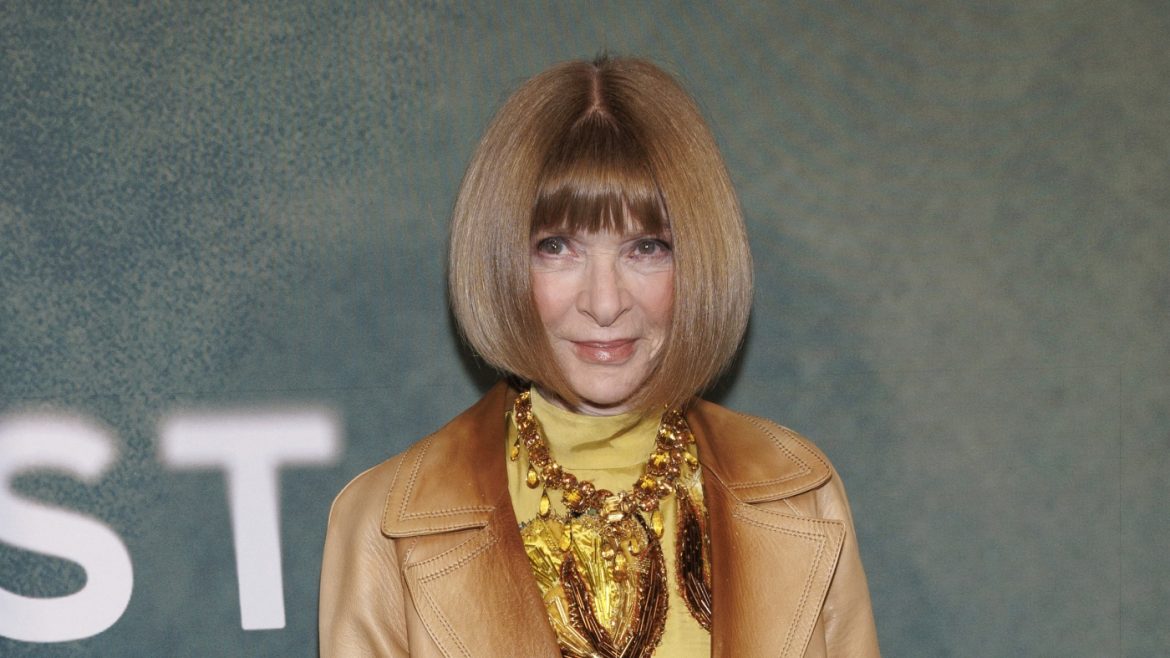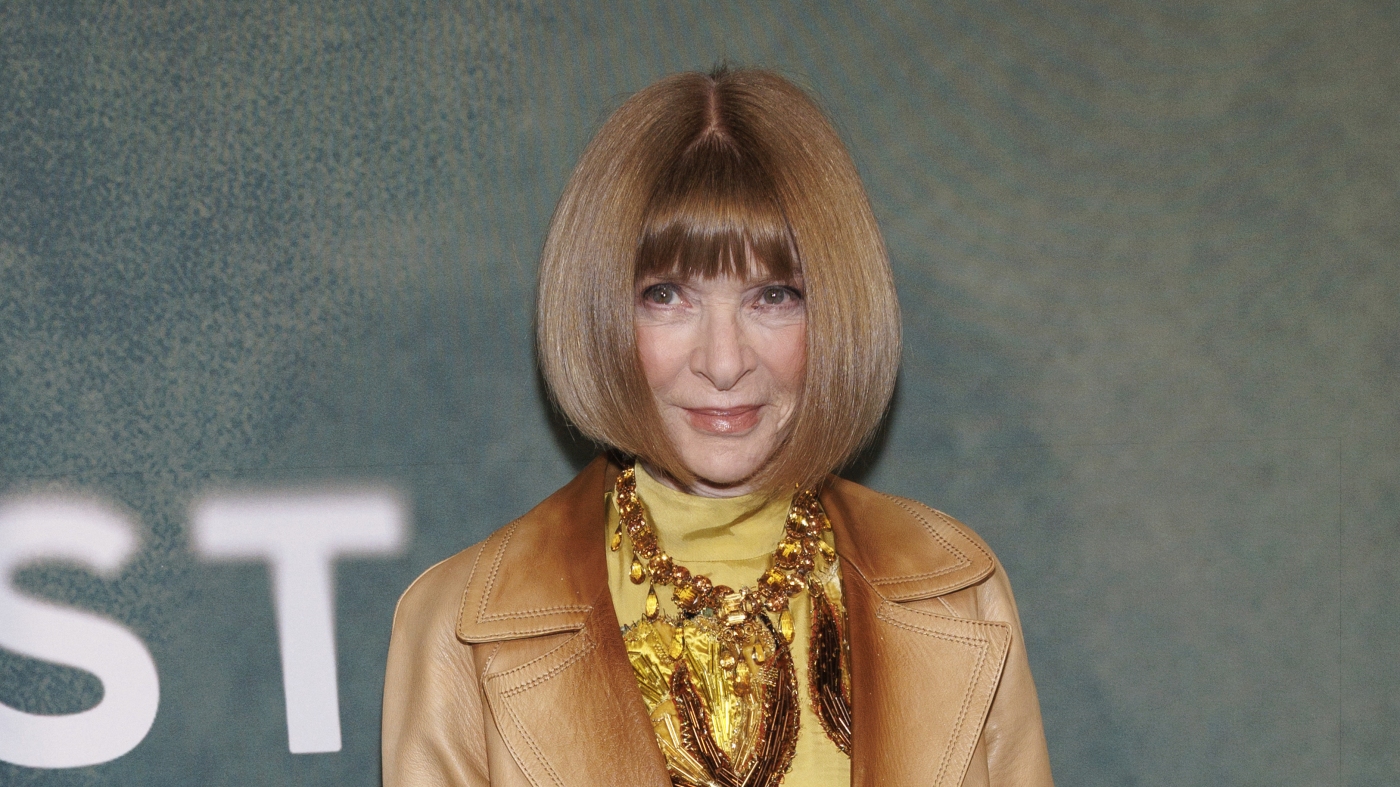Anna Wintour’s transition from the editor-in-chief role at *Vogue* marks a pivotal moment in fashion media, signaling both an end and a new beginning. For nearly four decades, Wintour has been the defining force behind *Vogue*, shaping its editorial direction, cultural influence, and global presence. Her decision to step aside from the day-to-day operations of *Vogue* US while retaining her broader leadership roles at Condé Nast and *Vogue* worldwide reflects a strategic shift that could redefine the future of fashion journalism.
A Legend Steps Sideways, Not Down
Anna Wintour’s tenure at *Vogue* has been nothing short of legendary. Known for her sharp editorial vision and uncompromising standards, she transformed *Vogue* into a cultural institution that extends far beyond fashion. Her influence has been felt in every corner of the industry, from setting trends to shaping public discourse. However, her recent decision to step back from the editor-in-chief role is not a retirement but a strategic realignment. By focusing on her roles as global chief content officer for Condé Nast and global editorial director of *Vogue* worldwide, Wintour is positioning herself to oversee the broader vision of the brand while allowing a new leader to take the reins of *Vogue* US.
This shift is significant because it reflects the evolving nature of media and fashion. The role of an editor-in-chief has become increasingly complex, requiring not just editorial expertise but also a deep understanding of digital platforms, global markets, and shifting consumer behaviors. Wintour’s decision to cede day-to-day control is a recognition of these challenges and an opportunity to redefine the role for the modern era.
Why Now? Deciphering Wintour’s Decision
Wintour’s decision to step back from the editor-in-chief role comes at a time when the fashion industry is undergoing rapid transformation. The rise of digital media, the fragmentation of audiences, and the increasing importance of global markets have all contributed to a more complex media landscape. Wintour’s leadership at Condé Nast has already positioned her to oversee a sprawling editorial empire, and her new role allows her to focus on strategy, global brand strength, and international partnerships.
This transition also signals a generational shift. The fashion world is changing, and so is its audience. A new editorial chief can potentially reimagine what *Vogue* represents in the 2020s and beyond, while Wintour safeguards the legacy and navigates Condé Nast through the challenges of the digital age. The search for a successor will be a litmus test for the industry, as it will reveal whether *Vogue* is ready to embrace new voices and perspectives.
What’s Changing at *Vogue*?
The transition at the top of *Vogue* is not just a change in leadership but a redefinition of the role itself. The search for a “head of editorial content” rather than a traditional editor-in-chief reflects a more collaborative, multidisciplinary, and future-oriented approach. This new role will require a balance of creative vision, digital fluency, and sensitivity to social currents, from diversity to sustainability to reader engagement across platforms.
The editorial evolution at *Vogue* is also a recognition of the magazine’s expanding reach. *Vogue* is no longer just a print publication but an omnichannel brand that includes YouTube series, podcasts, TikTok takeovers, and photo essays. The new leader’s challenge will be to synthesize these various streams without diluting the magazine’s unique point of view, sense of occasion, and commitment to artistry.
Wintour’s Ongoing Influence
Despite stepping back from the editor-in-chief role, Anna Wintour’s influence on *Vogue* and the broader fashion industry remains immense. As the global editorial director of *Vogue* worldwide, she will continue to oversee the brand’s international editions and ensure that *Vogue* remains a global force. Her role will be less about the day-to-day operations and more about steering the ship through the seismic shifts in the media landscape, including the rise of AI-driven content creation and the need for real-time connections with readers.
Wintour’s continued presence means that *Vogue* will maintain a gold standard for quality and style, even as the industry evolves. Her legacy is not just in the pages of *Vogue* but in the broader cultural impact she has had on fashion and media. As the industry looks to the future, Wintour’s vision and leadership will continue to shape the direction of *Vogue* and Condé Nast.
What Does This Mean for Fashion and Media?
Wintour’s transition is a watershed moment for the fashion media ecosystem. The implications stretch far beyond a single office handover, affecting the broader industry’s approach to leadership, globalization, and digital innovation.
Generational Handover
The search for a new “head of editorial content” at *Vogue* US represents a generational handover that could inject fresh blood, new aesthetics, and grassroots connections into the magazine. For decades, Wintour’s view was the final word on everything from the September Issue to the Met Gala guest list. A new editor may be more likely to champion new voices, embrace experimental talent, and question some of the unwritten rules that have defined *Vogue* for years.
This transition could also embolden other legacy publications to ask tough questions about leadership succession and modernization. Wintour’s reign was marked by her uncompromising vision, and her departure from day-to-day control could set a precedent for old-guard editors everywhere.
Globalization, Digitalization, and Diversity
Fashion is no longer dictated solely from Madison Avenue. *Vogue’s* relevance depends on its ability to encapsulate rising trends, tastes, and social politics from around the world. Wintour’s focus on the global brand amplifies this mandate, as she works to knit together a truly international voice that includes Parisian chic, Korean streetwear, and Indian couture.
Digitally, *Vogue* faces a fight for relevance in an era dominated by algorithms, memes, and immersive technologies. The next era will be shaped by real-time connections with readers on platforms that are still emerging. Wintour’s continued presence ensures that there will still be a benchmark for quality and style, even as the industry evolves.
The End of an Archetype
With Wintour’s change of focus, the figure of the all-powerful magazine editor—the oracle in commanding office—is finally dissolving into myth. Future editors won’t rule alone or solely on taste. They’ll be conductors working with teams of digital natives, data geeks, and multi-platform content producers. Yet, for as long as Anna’s in the wider role, the industry will keep looking to her as its north star—albeit from a greater distance.
Wintour’s Enduring Legacy
Anna Wintour’s legacy is indelible. She built *Vogue* into a cultural institution that reflects the world while also shaping it. Her detractors called her “icy”; her admirers called her “visionary.” Both are probably true. More importantly, she played her role with singular commitment and ingenuity. Her next act—as the impresario behind *Vogue’s* global expansion and Condé Nast’s reinvention—may, over time, prove just as significant as her years at the editor’s desk.
The Lasting Impact: Where Does *Vogue* Go Now?
*Vogue* will weather this transition not as a destructed kingdom but as a living, evolving experiment in how legacy media can bridge taste and technology, aspiration and accessibility. Whoever takes up the editor’s chair will face monumental expectations—but also inherit a brand still unmatched in mystique, visibility, and influence.
The biggest risk isn’t scandal or style drift—it’s irrelevance. The challenge ahead is for *Vogue* to not only reflect the world but direct it. For the first time in four decades, that job won’t fall to Anna Wintour alone. What she’s built over nearly forty years will not vanish; her touch will linger in every page, every campaign, every red-carpet moment the magazine shapes. But history is being invited to the table, and the seat just vacated by Anna Wintour is, once again, the most coveted—and precarious—in all of fashion.


